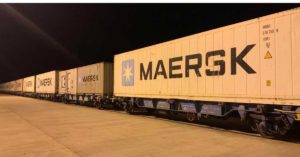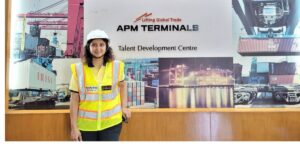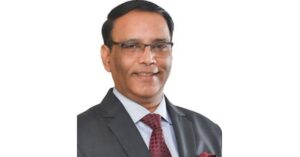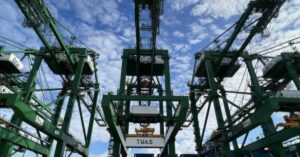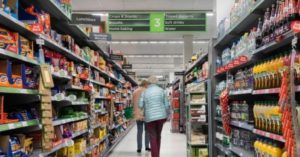“Our next goal is to come up with a report on best practices in gender diversity. Companies can refer to it wherein we will highlight the organisations doing good work,” shares Ms Sanjam Sahi Gupta, Founder Maritime SheEO.
In spite of so much discussion happening around there is still significant imbalance in gender diversity in the industry. In fact, IMO Secretary General also said that we need to accelerate the change, we need to bring in change much faster. How do we address these serious issues of gender biases, stereotypes and eliminating gender based assumptions to create a level playing field? How can maritime industry make a significant progress in achieving gender equality and unlock the full potential of its work force?
For gender diversity and to have an inclusive workforce I believe organisations should establish clear diversity and inclusion policies within their setups, establish opportunities for career advancement for women, implement training programmes on gender sensitivity and unconscious bias, encourage mentoring and networking opportunities for women within the industry. Monitor progress in gender diversity within the organisation and make necessary adjustments. Every organisation needs to conduct this internally.
You have given a list of things that an organisation should follow to bring in gender diversity. From your experience can you give me an insight into how the organisations are responding in the recent times?
Organisations have really woken up after 2019 when IMO had declared the year for empowering women in maritime and IMO member states pledged to continue this in the years to follow. Organisations are seen to have woken up to gender diversity and the needs. They are doing what we are saying on two sides – one is seafaring side, especially in India what we are seeing is companies want to hire women seafarers and there aren’t enough seafarers, so it’s the quite opposite situation right now. There is a huge demand for female seafarers and there aren’t enough women. I get calls every other day from organisations if we are having the database, because they want to hire more women seafarers.
Coming to onshore, I have seen that companies have now understood that diversity is important not just as a model thing to do, but as the business case. So companies are looking to hire more women. This shift in mind set is happening and organisations are moving slowly but steadily in that direction.
Now, there is need for more women coming into this industry, especially seafarers. What should be done?
Firstly, we have a lack of role models and lack of visibility in the industry itself. Women don’t know that this is a career, so most young people don’t see this as a preferred career of choice. The industry needs to stop working in silos, they need to jointly with the government promote it in educational training institutions, so that young people know that it is a career choice that they can take. When we approach educational institutions we need to take female role models there. Seeing is believing and when ladies observe that there are women out there sailing, automatically they will inspire to take up the career.
When you talk about seafaring women, there is a recent survey done by WISTA which brings up the issue of bullying and harassment while on high seas? About 95% of the respondents said their companies have an active policy against harassment. So how this should be addressed?
For the long term there is no magic wand to get rid of this issue, but we can do gender sensitisation training which DG Shipping as you know under their new initiative they have come up with a proposal that all people undergoing sea training have to undergo a gender sensitisation training. Which is a step in the right direction. We cannot probably get rid of the problem immediately, but it’s a good starting point and will lead to a change of mind set.
Gender sensitisation training should also be done to all those sitting in the shipping offices recruiting women. Because it’s not just the harassment or bullying that takes place out there, women also face that thing before they are employed, so I think everybody needs to undergo this gender sensitisation training. Continuous awareness seminars should be conducted for making a shift of mind set, which cannot happen overnight. We can’t even quantify and measure it, so one way it’s a challenge, but women will find it comfortable when there are more women on the ship. When the number of women working on-board ships increases then the number of harassment cases will come down. When there are more women on-board, there is a sense of belonging and moral support as well.
Recently, one of the ship financing company when it had to give a term loan to a shipping company, it linked the loan conditions to one of the KPIs, stating that they need to have this gender diversity, improving the gender balance year on year. Do you think such business linked conditions also will put some pressure on the organisations and bring in the required change in this segment?
Sometimes when organisations don’t want to do it, there is a way to entice them to do it as well. There was a case, few years back, Ikea was looking for shipping companies to move their business and they had set gender diversity as a pre-condition for qualifying to do business. When suppliers or banks/financial institutions in power, they dictate these terms then automatically organisations have to take it seriously.
Can you give me an insight into what Maritime SheEO has been doing in the last few years and how satisfied are you with the progress you are able to bring in?
I will highlight three major achievements we have done: we have done a business case for gender diversity which is funded by the Dutch Consulate and it has also featured the results and linked that article. This is a very good data to prove business case for diversity and has encouraged more companies to hire women. So, there was an absence of data and we have created that valuable data and companies are referring to it.
The second achievement is IMO has funded our leadership accelerator programme for women in maritime and 90 women across the globe have undergone our leadership accelerator programme, following which they have risen up in their careers. This we can quantify and say we have made a difference. Third is, we have formed the maritime SheEO community which is an online group to provide guidance, mentoring even to junior levels. We are providing programmes on mental health, career guidance and women from diverse nationalities like Saudi Arabia, Iran and Ghana tell their success stories. So we have not been aware of basic strides of women in traditional nations. The idea is to collect these women and inspire each other. We also have a female pilot crew, wherein marine pilots from across the globe connected online through whatsapp, linkedin, to discuss common problems and inspire each other.
In light of what you are doing at Maritime SheEO, what kind of support you are getting from government and industry? What do you expect from the policy makers or industry in India?
We have definitely seen an increase in support, especially for this year’s conference if I may say so. We are approached by a lot of international companies who would like to partner with us on this journey. So rather than we pursuing businesses to join us in this initiative, companies are coming to us, for example our sponsor in the UK Subsea 7, approached us for partnering, our sustainability sponsor is an Oman based company. Overseas companies from the pacific basin as well are coming forward to partner with us.
This is the shift, not only from the national but international companies as well. Even MSMEs are coming forward to partner us, companies with small budgets are coming up and they are so passionate about gender diversity. People from high level ministries will also be joining us. From this year’s conference we expect collaboration from world leaders for the sea change we have discussed.
IMO is also sending two women from biofouling to speak at the event about opportunities for women in biofouling. These are areas within the maritime sector not very well known. One lady from gloLitter project will be discussing about marine pollution. So we will be actually talking about different careers for women in the maritime space.
Post-conference what will be the action plan for Maritime SheEO? How will the outcomes of the deliberations at the event be converted into an actionable plan? We will be working on the points raised and suggestions made at the conference. We will also need more data so we are in talks with few companies to fund our research, highlighting the best practices. Companies are taking up gender diversity and there are best practices already out there, so companies don’t need to reinvent the wheel. Our next goal is to come up with a report on best practices in gender diversity. Companies can refer to it wherein we will highlight the organisations doing good work.




